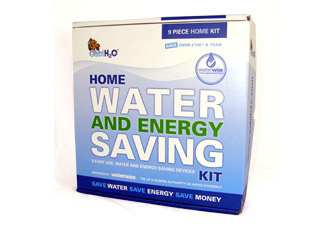Water saving devices

Saving Water: A Universal Responsibility
Water is a finite resource and it should be everyone’s responsibility to work on reducing the amount of wasted water in both homes and businesses. There are many simple things that can be done each day without much hassle or inconvenience. Some of these may be ideas that are already being implemented in many of the homes and businesses across the country.
• Don’t let the water run while washing the dishes or brushing teeth.
• Use the dishwasher or clothes washer only when they are full.
• Wash clothes in cold water.
• Reuse water from cooking or cleaning in order to water plants.
• Check routinely for leaky taps and make repairs.
• Use mulch to retain the moisture in the ground, reducing the need for watering.
• Carefully place sprinklers to reach lawns and gardens instead of paths or walls.
There are many other easy ways that people have found to save money at home and at work. As the importance of water conservation increases, more and more people have begun to look into the different types of water saving devices available and are learning how to implement them in their daily routines and habits.
Devices for the Whole Home
According to Waterwise.org.uk, one of Britain’s leading authorities on water use and efficiency, a combination of human demand and changing climate effects will result in further water stress. As the emphasis on responsible water use continues to grow, it is important to recognise that there are many ways to install water saving devices that can save hundreds of litres of water a day, easily.
What are some of the most popular devices?
Here are just a few examples:
• Flush Converts – these devices convert the normal single-flush function on the toilet to a more water efficient dual-flush unit.
• Water Efficient Showerhead – these showerheads are made to fit on all standard hoses and should operate so that the user doesn’t notice a change in the water pressure.
• Garden Watering tools – with these water efficient devices the garden can be watered less often and can be watered when temperatures and other circumstances make watering most efficient.
• Rainwater Diverter Kits – use rainwater effectively, reducing the amount of extra water needed for the garden and prevents an overflow of water where it isn’t needed.
• Water Butt tools – these tools allow the collected rainwater to be used by homeowners and businesses.
Everyone Benefits from the Use of Water Saving Devices
Information shared by Waterwise.org.uk indicates that while seventy percent of the Earth is covered by water, only one percent of that water is available for humans to use. Without water, life on Earth would probably cease to exist. From direct human consumption to the use of water to grow crops to the ability of existing bodies of water to regulate the temperature of the Earth, every human being on the planet is affected by the responsible use of water. Alternately, every person on Earth is also affected when no responsibility is shown in the consumption of water. If each person in Britain would remember to turn off the tap when brushing their teeth, enough water could be saved to fill 180 Olympic-sized swimming pools. That has a significant effect.
How to Use Water Saving Devices
Clearly it is of the utmost importance that people learn to use water responsibly. Learning how to implement the use of water saving devices can increase the positive effects of water conservation for the homes and businesses where those devices are being used. Some devices, such as those used in plumbing systems, will be installed just once and will run automatically with little to no further cost or attention. The majority of household water consumption happens in the bathroom and through toilet use. Devices that affect the amount of water used for every toilet flush can save substantial amounts of water. Some of these devices are slipped into the toilet tank and others involve replacing the entire toilet. Pressure-reducing valves can be purchased and installed for a home, reducing the amount of wasted water and may also reduce the amount of water-related damages to the home.
Saving water is a universal responsibility and everyone involved can both help and benefit from the combined efforts.
